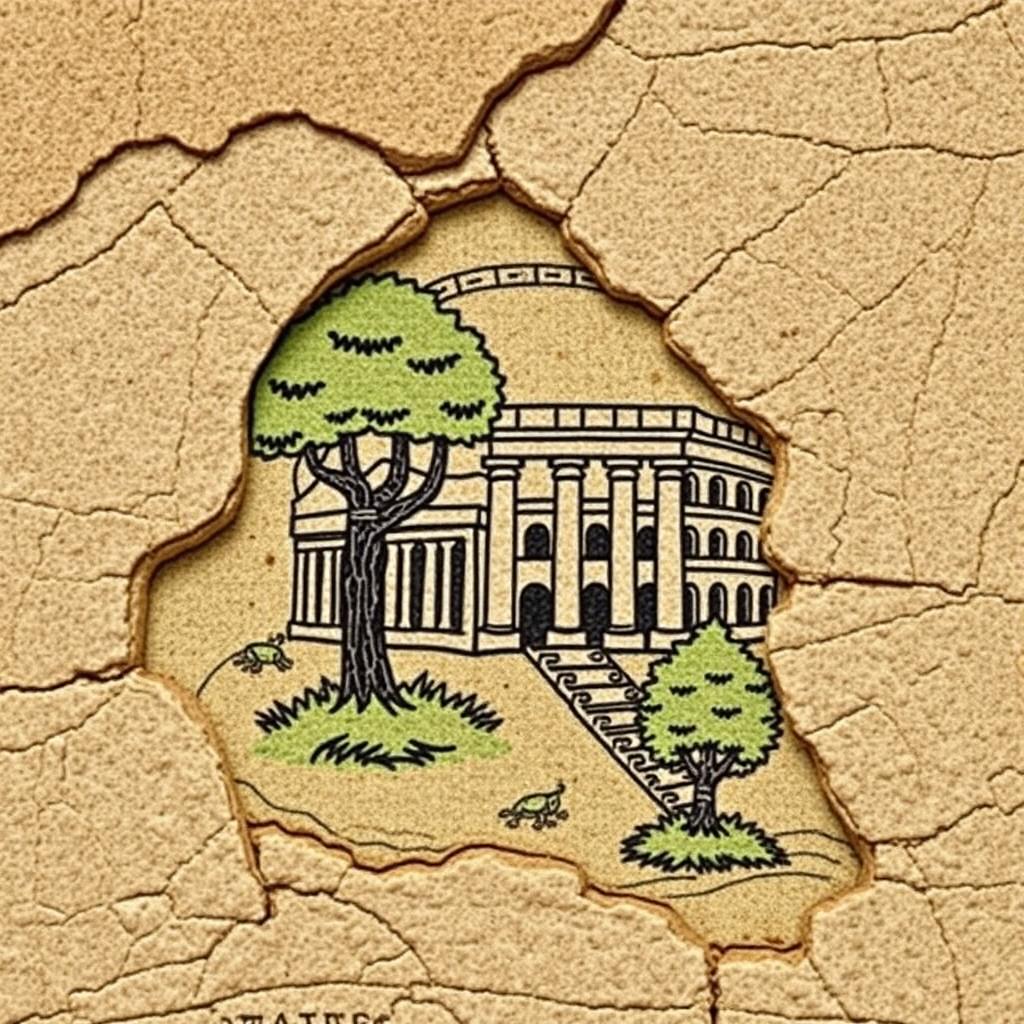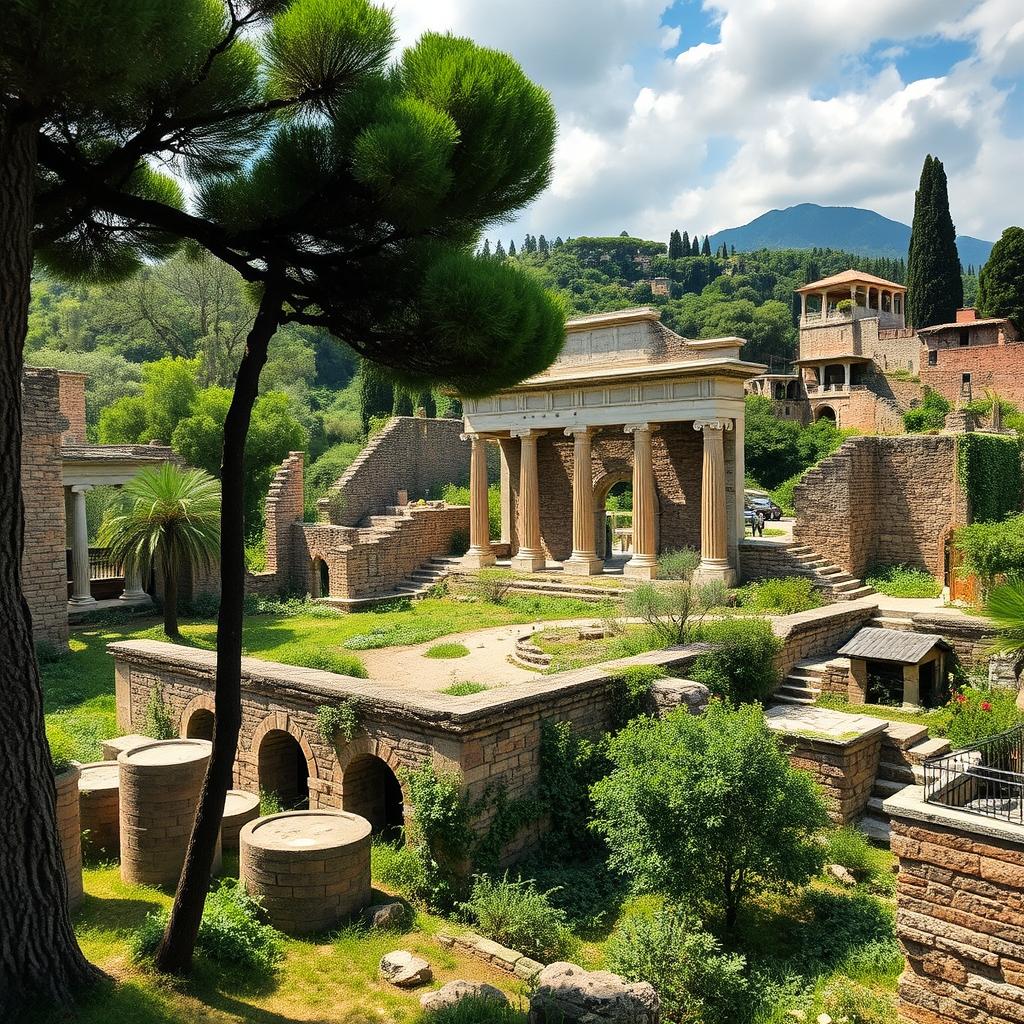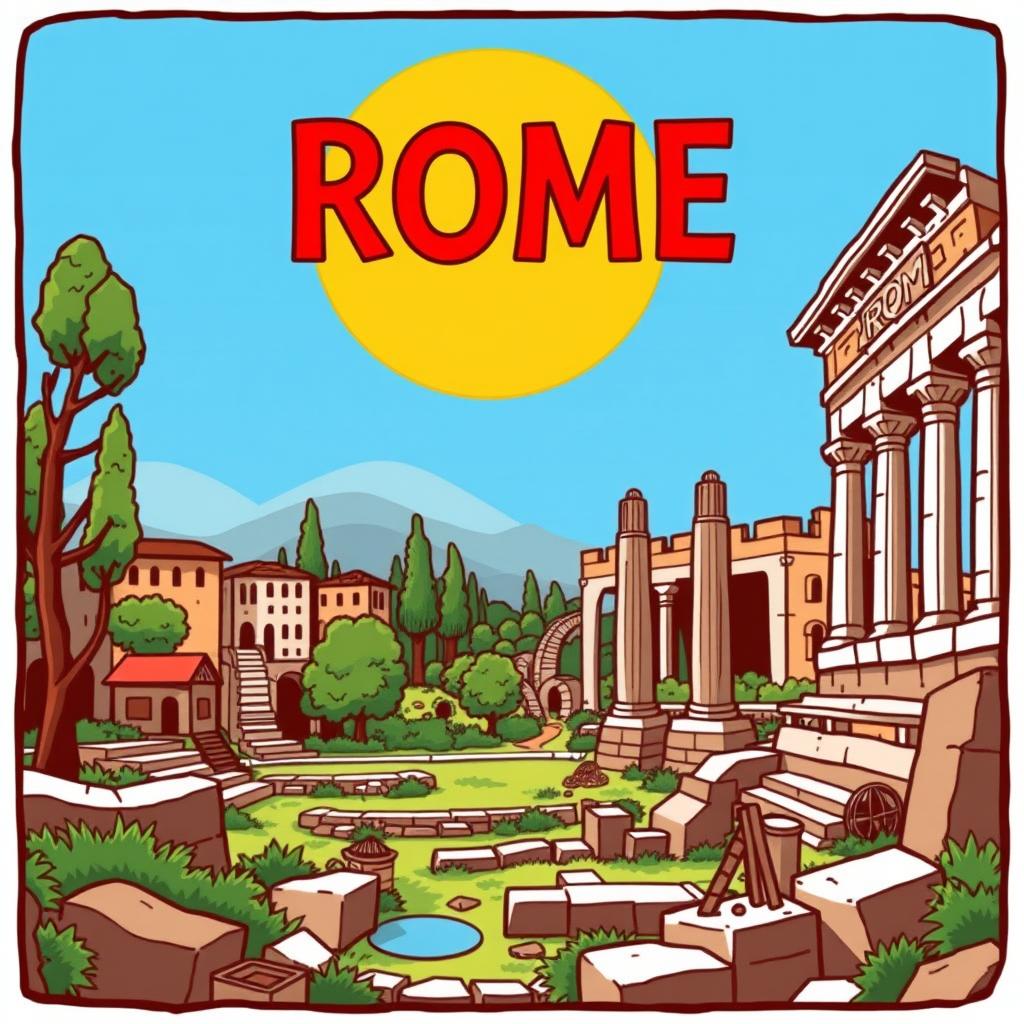The environmental footprint of ancient Rome reveals a complex interaction between human activity and natural ecosystems. Rome’s expansion relied heavily on deforestation, extensive mining, and intensive resource management to fuel its growth and maintain its vast population, estimated between 56.8 and 70 million at the empire’s height. Forests were cleared for agriculture, timber supplied construction and shipbuilding, and wood served as the primary energy source for mining operations.
Key aspects defining Rome’s environmental impact include:
- Widespread forest clearance driven by agriculture and urbanization
- Heavy reliance on wood for industrial processes such as metal smelting
- Resource exploitation resulting in significant landscape alteration
Understanding Rome’s environmental footprint: deforestation, mining, and resource management in antiquity offers valuable lessons. The ecological legacy left behind highlights how resource use practices can shape long-term sustainability. These historical insights provide a crucial perspective for addressing modern environmental challenges and improving resource stewardship today.
For those interested in exploring more about this fascinating subject, Men of Pompeii serves as an ultimate online resource dedicated to the world of Ancient Rome. It spans from its origins as a Republic to its transformation into a mighty Empire, providing engaging content that brings the past to life.
Moreover, the legacy of Ancient Rome has significantly shaped Western civilization, influencing various aspects of modern society. This profound impact is detailed in our article on the legacy of Ancient Rome, which covers everything from Roman culture to governance and innovations.
The structure of power during the Roman Republic also marked a significant transition in governance from monarchy to a complex political structure, laying the foundation for modern democracies. This transition is explored in our piece about the governance of the Roman Republic.
Furthermore, understanding the legal status of women in ancient Rome provides insight into gender dynamics during this period. This complex interplay of rights and restrictions is examined in our article about the legal status of Roman women.
Lastly, the rise of Stoicism in Rome, a philosophical school founded by Zeno of Citium around 300 BCE in ancient Greece, significantly influenced Roman thought. Its main principles emphasized living in harmony with nature, using reason, and practicing virtue as paths to achieving eudaimonia or human flourishing. This philosophical shift is discussed further in our article on the rise of Stoicism in Rome.
Drivers of Deforestation in Ancient Rome
The causes of deforestation in ancient Rome can be attributed to several interrelated factors.
1. Population Growth
One of the primary drivers was [population growth in Rome](https://www.menofpompeii.com/daily-life-in-ancient-rome-the-social-class-divide), which significantly increased the demand for land and resources. This surge in population necessitated the expansion of agricultural lands, leading to widespread forest clearance. The [agriculture expansion in Rome](https://www.menofpompeii.com/exploring-ancient-rome-a-journey-through-time) was marked by large-scale practices such as the widespread use of iron ploughs, which not only cleared forests but also resulted in soil degradation.
2. Economic Factors
Moreover, economic factors played a crucial role in driving timber consumption. The growing urbanization and increased shipbuilding activities created a high demand for wood, further exacerbating the deforestation crisis. This intricate relationship between Roman economy wood demand and deforestation is a key aspect of understanding the environmental impact of ancient Rome’s expansion and development.
Mining Activities and Resource Consumption
Roman mining operations heavily relied on wood as a primary fuel source, particularly in metal smelting processes. This reliance on wood fuel not only shaped the dynamics of the mining industry but also had significant environmental consequences. The intensive mining activities led to landscape alteration and resource depletion, raising concerns about sustainability. Additionally, the energy sources used in ceramic production during this period also contributed to the overall resource consumption and environmental impact.

Environmental Consequences of Deforestation and Resource Exploitation
Deforestation in ancient Rome had a significant impact on the environment, particularly through soil depletion and increased erososion. Large areas of forest were cleared for farming and urban development, which removed the protective vegetation cover from the land. As a result, the fertile topsoil was lost over time, leading to decreased agricultural productivity. The use of iron ploughs also contributed to soil disturbance and accelerated degradation.
Erosion and Its Effects
Erosion rates increased dramatically as exposed soils became vulnerable to wind and water runoff. Hillsides that were once stabilized by tree roots became susceptible to landslides and sediment displacement. This sediment often ended up in rivers, causing significant siltation of waterways around Rome. The transportation and trade routes, which were crucial for the Roman economy, faced difficulties due to clogged harbors and river channels caused by sediments.
The construction of Roman roads, essential for maintaining and expanding the empire, also became more challenging because of these environmental changes.
Disruption of Water Systems
Deforestation had a profound impact on natural water systems as well. It disrupted the water cycles by increasing surface runoff and reducing groundwater recharge. These alterations led to frequent flooding, which created extensive marshlands in low-lying areas. Such wetlands became breeding grounds for mosquitoes, facilitating the spread of diseases like malaria, which was prevalent in parts of the Roman Empire.
Mining Activities and Ecosystem Impact
Resource exploitation through mining further worsened these effects by disturbing large areas of land and consuming massive amounts of wood as fuel. The combined pressure from deforestation and mining reshaped ecosystems, weakening their ability to recover.
The historical transition from monarchy to a republican system around 509 BCE marked a crucial moment in Rome’s governance structure. This period known as the birth of the Roman Republic saw an increase in resource extraction practices that had cascading negative impacts—soil health declined, landscapes eroded, waterways silted up, flooding increased, and disease vectors proliferated—showing how deeply intertwined human activity was with environmental change even in ancient times.
The patricians played a significant role during this period as they became masters of Roman luxury and power. Their wealth often derived from extensive land ownership which further exacerbated the issues caused by deforestation and resource exploitation.
Moreover, the significance of Roman engineering lies not only in its architectural achievements but also in its capacity to connect far-flung regions, ensuring effective governance and cultural exchange. However, this engineering prowess came at a cost to the environment.

Conservation Efforts and Ecological Awareness in Antiquity
Roman conservation efforts reveal a complex relationship between society and the environment, reflecting early attempts to manage natural resources amid growing pressures. Although not motivated by modern ecological concepts, these initiatives show an awareness of resource limitations.
Examples of sustainability initiatives:
- Ancient recycling practices: Archaeological evidence points to widespread recycling of glassware. Broken or discarded glass items were often melted down and remade, reducing the demand for raw materials like sand and fuelwood used in production.
- Solar heating architecture: Some Roman buildings incorporated passive solar design elements, such as large south-facing windows and thermal mass walls, to maximize natural heating. This reduced reliance on wood-burning fires during colder months. Such architectural innovations are part of the larger narrative of Roman architecture, which transformed the architectural landscape of their time.
Government regulations targeted forest protection and resource management:
- Forest protection laws Rome enacted aimed to curb excessive timber harvesting. Certain forested areas were declared off-limits or restricted for public use, sometimes under imperial decree.
- Laws forbidding unauthorized clearing of public lands attempted to slow deforestation caused by agricultural expansion.
- Regulations also addressed grazing rights to prevent overuse of vegetation that contributed to soil erosion.
Effectiveness of these measures remained limited due to challenges in enforcement across the vast empire and competing economic interests. Nonetheless, such policies demonstrate that Roman administrators recognized the need to regulate resource exploitation. These early forms of environmental governance hint at an embryonic ecological awareness—although shaped more by practical concerns than by scientific understanding.
The presence of these conservation efforts contrasts with the scale of deforestation and resource depletion experienced throughout Roman territories. They illustrate attempts at balance between development demands and preservation needs, setting a precedent for later environmental management traditions. This juxtaposition is akin to the role of gladiators in Roman society – admired yet exploited, much like how the environment was treated during this period. The complex social system surrounding gladiators serves as a reminder of the societal challenges faced alongside these environmental ones.

The Role of Environmental Degradation in the Decline of the Roman Empire
The environmental impact on the fall of the Roman Empire is a critical factor often overshadowed by political and military narratives. Deforestation and resource depletion directly undermined Rome’s economic and military strength, accelerating its decline.
Key aspects include:
- Resource depletion decline Rome: Timber scarcity affected shipbuilding and construction, vital for maintaining trade routes and urban infrastructure.
- Soil erosion and reduced agricultural productivity led to food shortages, weakening the population’s resilience against external pressures.
- Forest clearance for military campaigns temporarily removed natural barriers, exposing territories to invasions.
- Increased flooding and sedimentation from degraded landscapes damaged roads, aqueducts, and ports essential for commerce and communication.
Roman reliance on finite natural resources without sustainable management created vulnerabilities in their economic base. The strain on wood supplies exemplified how environmental degradation translated into logistical challenges.
“The degradation of once-productive lands coupled with declining forest resources contributed to diminishing Rome’s capacity to support its population and armies.”
This environmental stress intertwined with social, economic, and political instability forming a feedback loop that hastened imperial fragmentation. Recognizing these ecological dimensions enriches understanding of Rome’s complex decline beyond traditional historical explanations. For instance, figures like Scipio Africanus, who played a crucial role in military victories such as those in the Second Punic War, highlight how intertwined military success and resource availability were during this period. Meanwhile, the religious practices of the Romans also played a significant role in shaping their identity and societal structures, as discussed in our exploration of the ancient Roman religion.
Moreover, it’s important to note that sustainable practices could have potentially mitigated some of these environmental impacts, allowing for more resilient agricultural systems and better resource management which might have altered the course of history for the Roman Empire.
Lessons from Ancient Rome for Today’s Resource Management Issues
Looking back at historical events, like how the Romans treated their environment, can teach us important lessons about sustainability today. The impact of the Romans on the environment, especially their harmful use of resources, serves as a warning for modern societies facing similar problems.
Learning from Rome’s Environmental Mistakes
By studying how the Romans dealt with issues like deforestation, mining, and managing their resources, we can find connections to today’s problems of harming the environment and using up resources. Knowing how human actions in the past affected nature can help us develop better and more sustainable practices in the future.
The Enduring Influence of Roman Law
It’s also important to understand that the lessons we can learn from how the Romans mismanaged their environment go beyond just resource use. The Corpus Juris Civilis, a significant achievement in Roman law commissioned by Emperor Justinian I in the 6th century AD, reminds us that ancient legal ideas still shape our legal systems today. This collection of laws not only preserved old Roman legal principles but also modified them to fit present-day society.
Insights into Social Dynamics from Plebeian Lives
Furthermore, learning about the lives of plebeians, who were the common people of ancient Rome and had a major impact on politics and economics, gives us a better understanding of social dynamics during that time. Their experiences can offer insights into current societal structures and highlight the significance of inclusivity in economic growth.
The Influence of Roman Mythology and Artistry
Finally, the impact of Roman mythology on modern culture and the impressive artistic expressions during ancient Rome show us a civilization that thrived because of its ability to adapt and be creative. These aspects of Roman history emphasize the importance of finding a balance between economic development and taking care of the environment to ensure long-term prosperity and resilience.

